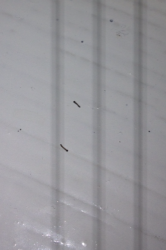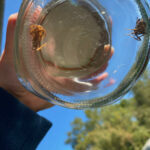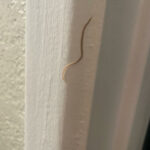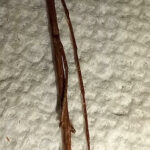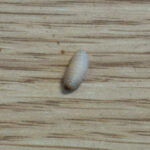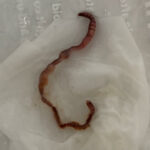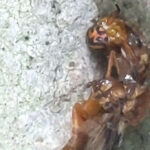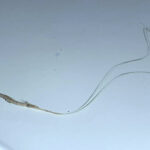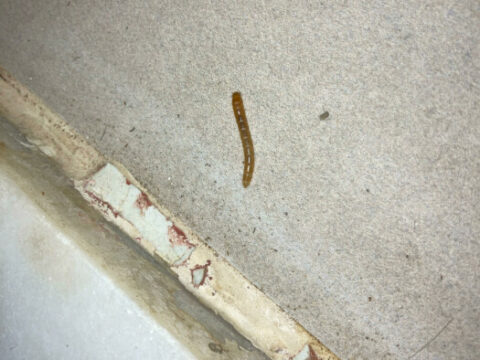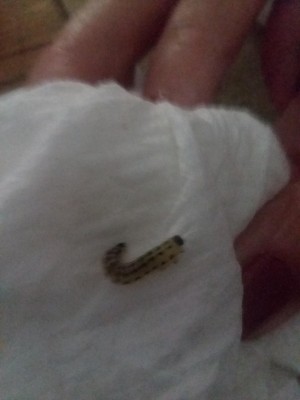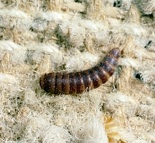The title of this article – “Small Worms with Stripes and a Black Head” – is the type of description we might have expected to accompany the picture recently submitted to us by a reader. Instead, we were sent only the picture, which does in fact depict two small, striped worms with black heads. We’ve been sent some direct questions before – like a mere “what is this?” that accompanies a picture – and we’ve also been sent emails that seemingly seek information, even though no question is asked. This recent submission, however, is the first to blend these two styles, offering us only a picture with no accompanying question (or any other text, for that matter). This puts us in a peculiar position: did the reader merely want us to observe the picture for no particular reason, or did he want us to provide some information? We’ve assumed the latter, and so we are here to ponder what the small worm with stripes and a black head might be.
Let us begin by examining the picture the reader submitted:
Again, having been asked nothing in particular, we have been granted the rare freedom to supply only the information we feel compelled to supply. We have decided to only speculate on the straightforward matter of identification, which is fitting in the present situation because we’re fairly sure we have written about the creature pictured above many times before.
As far as we can tell, the reader seems to have found two moth fly larvae. We can’t be entirely sure of this because the picture isn’t exactly a close-up shot, but this is as good of a guess as any. Moth fly larvae do tend to have dark, blackish heads, and the rest of their legless bodies are covered with dark stripes. If you look closely at the picture above, all of this seems consistent with what the reader found.
Moth fly larvae are of course the larval form of moth flies, which makes them, well, larvae, and not worms. However, it is extremely common to mistake larvae for worms, so that is why we called them “worms” in our hypothetical description above. In homes, moth flies are generally found in bathrooms, kitchens, and basements. Because of the decaying matter found in or near drains, pipes, and similar such household fixtures, moth flies tend to lay their eggs in or near these areas. They lay eggs in these places, and these eggs quickly hatch into larvae that feed on the decaying matter in the surrounding environment. It was at this stage in the life cycle that our reader photographed their find.
Because the picture isn’t very clear, we are, once again, not completely sure that the small, striped “worms” with black heads that our reader found are moth fly larvae. On the other hand, moth fly larvae are one of the most common creatures readers find in their homes – we seem to get a question about them every month or so – so this lends plausibility to our hypothesis. Hopefully we have a supplied a suitable answer to the question our reader never asked.
All About Worms is always free, always reader-supported. Your tips via CashApp, Venmo, or Paypal are appreciated! Receipts will come from ISIPP Publishing.
